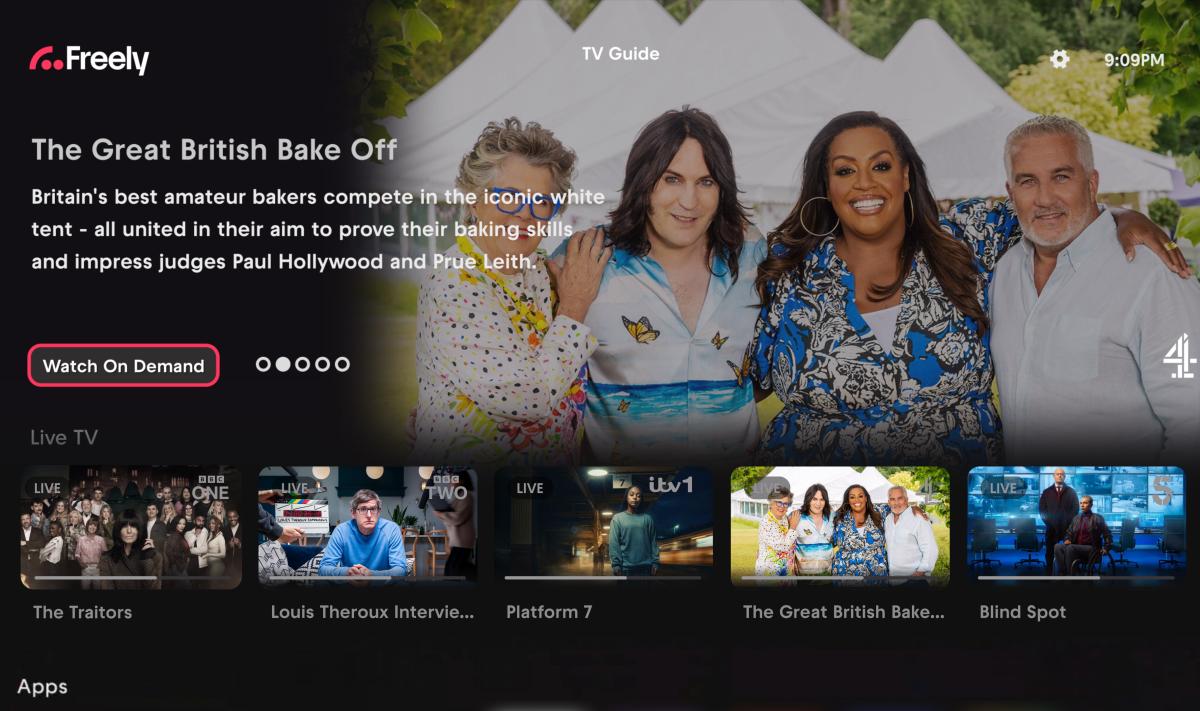The HbbTV standard plays a major role in addressable TV advertising efforts in several European markets, but in the UK it’s yet to see much use in advertising. And given the availability of targeted ads within broadcaster-owned streaming services and Sky’s addressable offering AdSmart, the specific use cases for HbbTV-powered addressable are less obvious.
But as penetration of internet-connected TV devices increases in the UK, there is still a significant advertising opportunity around HbbTV says Ed French, CEO of 7th Minute, a TV data business.
In this piece, French lays out the differences between HbbTV-powered addressable advertising and other types of targetable TV ads, and looks at the remaining barriers which need to be overcome for HbbTV to reach its full potential in the UK.
As of autumn 2021, the HbbTV standard moved from being optional to mandatory in the specification for digital terrestrial television in the UK.
HbbTV – or hybrid broadcast broadband TV, to give it its full name – is set to usher in a new era of innovative, interactive TV services delivered over broadcast and broadband TV networks. As the way in which TV content is made available continues to evolve, this has far-reaching consequences for many parties, including broadcasters, advertisers and viewers.
The background
The HbbTV standard, for those who aren’t familiar, is a global initiative based on the specifications created by the Open IPTV Forum (OIPF), a non-profit consortium formed in 2007 by AT&T, Ericsson, Orange, Panasonic, Phillips, Samsung, Siemens, Sony and Telecom Italia that focused on Internet Protocol (IP) television standards. (The two organisations merged in 2014.)
In simple terms it brings digital benefits to linear television; broadcasters can add new features to traditional linear programming, while advertisers can deliver targeted messages in the form of addressable TV. It is a specification for today’s TV environment that leverages ongoing technological advancements as well as the changing way in which people consume TV content.
As is well-covered, several European markets are already advanced users of HbbTV. Germany leads the way with 18 million TV devices that are HbbTV-enabled and a market that has used ATV technology for several years. In France, TV channel M6 has used HbbTV-enabled ATV products since 2018, and in Italy, more than 4 million households can be reached by HbbTV-based ATV in the live linear broadcast stream.
There has however been less focus on the standard in the UK – but that looks set to change. Almost four fifths (79 percent) of UK TVs being connected to the internet according to the 2021 Ofcom Technology Tracker, while a recent in-depth study by the Digital TV Group (DTG) showed that around half of all ‘TV devices’ in the UK have the capability to replace standard broadcast ads with ads delivered by broadband – without spoiling the viewing experience.
Potential benefits
HbbTV opens up some exciting new possibilities, and has been adopted by the BBC, ITV, Channels 4 and 5, and Freeview Play. (A critical point to note here is that, while on-demand and streaming services are widely used, connected TVs are also used to watch live TV – in effect linear, but with the benefit of interactive capabilities.)
Broadcasters using HbbTV can vastly enhance their ‘red button’ content, offering viewers the chance to interact with activities that are relevant to the content they are watching without leaving the main TV screen – quizzes and polls for example, or information about a particular sportsperson or actor.
But it is on the advertising side that things get even more interesting.
To look at the context, while linear TV viewing is declining slowly, it is still a staple of daily television consumption (representing 75 percent of total viewing time compared to 25 percent for OTT according to the 2021 report, Comscore Connected TV: Viewing Behaviour in the UK). And linear TV is really good at its job – quite literally broadcasting to many people at the same time. However, options for targeted advertising are limited to programme categories and genres, and broad regional locations.
HbbTV lets linear continue to do what it does best while boosting it with the ability to overlay data onto a show and advertise accordingly (with frequency capping ensuring budgets are used to the best effect).
The advertising capabilities of existing digital TV, such as Freeview, can be augmented with the personalisation that is typically associated with addressable advertising (currently AdSmart in the UK) and streaming (ITVX, All 4 and My5, with Netflix and Disney joining the fold). Different households watching the same TV programme can be shown ads personalised to specific criteria such as their demographic profile, viewing behaviour, interests and location – without the need for an AdSmart set top box.
HbbTV technology therefore creates additional inventory that content owners and distributors have at their disposal for personalised advertising – with the overall effect that revenue generating opportunities are expanded.
This is supplemented with an increase in the targeting data available from internet-connected TVs and set top boxes. Significant progress is also being made in terms of analysing the content of TV programmes themselves; this ‘TV data’ allows advertisers to benefit from contextual targeting (and therefore brand safety).
Meanwhile, the hybrid nature of the content offers the potential for programmatic trading and the benefits offered by the automated buying and selling of TV inventory.
Further enhancements from HbbTV come in the form of the possibilities offered by different types of ad formats and models; display ads might be shown outside the traditional ad break as a viewer changes channels for example (the SwitchIn Spot). L-banners also appear outside the ad break, surrounding the TV programme content with an L shape commercial while the Zoom format puts a C shape ad around the programme, and the Spot Frame complements the traditional commercial by allowing the advertiser to personalise the ad with input that can be altered based on the day, channel, programme or viewer segment. All these options potentially offer an alternative to ‘sponsorship bumpers’, with their digital nature making this type of advertising more accessible.
HbbTV, AVOD/BVOD and AdSmart
In simple terms HbbTV ‘brings addressable advertising to linear TV’, but there are subtle nuances between it and the targeted TV advertising currently available.
AdSmart for example is only available during scheduled live ad breaks. It cannot interfere with regular programming; ads replace the linear ad that was scheduled with something that is relevant to a specific household. Someone watching Channel 5 in a non-AdSmart house might see a more generic linear ad (traded using BARB reach numbers and demographics) for home insurance for example, while someone else watching the same programme via AdSmart is shown an ad for the new Audi, based on the targeting signals from the set top box (postcode data, matched first- and third-party data, etc.)
AVOD and BVOD (whether being watched live or on-demand) are similar in terms of inserting more personalised ads, although because these can be delivered programmatically, broadcasters can choose when the ad break appears in a programme.
Similarly, HbbTV will have the capability to replace ad breaks (as with AdSmart and AVOD and BVOD) with targeted ads. But, as referenced above when looking at ad formats, it will also offer the opportunity to insert new targeted ad units and formats during programming. This offers revenue generating opportunities for broadcasters in terms of monetising programmes and offering personalised ad breaks on broadcast linear digital TV.
Hardware and software
There are also differences ‘under the bonnet’ that it is important to understand.
AdSmart is custom and proprietary hardware and software developed by Sky and implemented by Sky and Virgin; AdSmart can only operate on these powerful advanced set top boxes. In contrast, CTV and HbbTV applications run on standard CTV operating systems and will work on mass-market modern connected TVs (LG and Samsung for example) and low-end set top boxes such as Freeview and Roku.
In terms of ad delivery, most personalised AVOD and BVOD ads are inserted by the broadcaster (server-side ad insertion). Some CTV apps do however insert ads on the device, or client, side (where the targeting decisions are made based on the available data) and it seems likely that this is how HbbTV will handle ad insertion as the broadcast TV source cannot support personalisation.
Market development
Based on the experiences of other countries, HbbTV looks to have a lot to offer the UK broadcast advertising market. But realising this potential requires input from all players.
As noted above, HbbTV relies on mass-market TV and set top box devices; every effort needs to be made to ensure the viewing experience is not degraded, through interruptions or issues such as buffering. Device manufacturers and content owners need to work together on international technology standards to ensure the HbbTV ad monetisation opportunities are uniform across all outlets.
And in a privacy-centric and data-focused world, brand safe datasets must be paramount. FAST content owners do not necessarily have reliable first party data, or a lot of content or metadata to exploit; new methods of building addressable audiences on HbbTV devices – without recourse to IDs or over-reliance on first-party data – need to be sought.
Changing the status quo
The ability to introduce targeting to ‘traditional’ TV advertising allows brands that already advertise on TV to extend their reach, find new audiences, and amplify their campaigns. Smaller advertisers and SMEs, typically reliant on digital, have the opportunity to add TV to the mix because they can optimise spend by only seeking out relevant consumers rather than broadcasting to all; meanwhile, niche brands, for whom TV’s mass viewership was previously a deterrent, can now find their specific audience.
HbbTV does exactly what it says – provides a vital hybrid between the traditional, trusty broadcast television that has served us so well for almost 100 years, and the future possibilities offered by the interactivity and connected nature of broadband TV.
In a constantly evolving market, it offers broadcasters robust technology investment opportunities, which in turn benefit the needs of today’s advertisers; as such it is a key step for both players as TV advertising plots its route to the fully addressable future that is assured.




